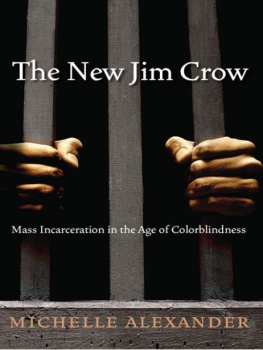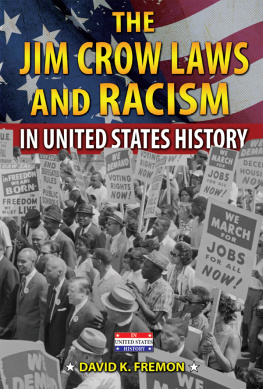This book was published with the assistance of the Authors Fund of the University of North Carolina Press.
2015 The University of North Carolina Press
All rights reserved
Designed by Alyssa DAvanzo
Set in Miller by codeMantra, Inc.
Manufactured in the United States of America
The paper in this book meets the guidelines for permanence and durability of the Committee on Production Guidelines for Book Longevity of the Council on Library Resources.
The University of North Carolina Press has been a member of the Green Press Initiative since 2003.
Cover illustration: In a juke joint on a Saturday afternoon in Clarksdale, Mississippi, 1939 (Courtesy of the Library of Congress, Prints and Photographs Division, LC-USF34-052479)
Complete cataloging information can be obtained online at the Library of Congress catalog website.
ISBN 978-1-4696-2093-0 (pbk.: alk. paper)
ISBN 978-1-4696-2094-7 (ebook)
Illustrations
Patrons dancing at a juke joint
A worker purchases goods at a plantation store
Investigative report from the Mississippi State Sovereignty Commissions Tom Scarbrough
Aaron Henry standing in front of his drugstore in Clarksdale
Roena Rand, after her arrest in Jackson during the Freedom Rides
Investigative report from the Mississippi State Sovereignty Commissions Zack J. Van Landingham
Peter Stoner, after his arrest in Jackson during the Freedom Rides
Mississippi State Sovereignty Commission pamphlet entitled Dont Stone Her Until You Hear Her Side
Cartoon on the front page of the Citizens Council newspaper
Acknowledgments
In the process of writing this book, I have benefited from the support, advice, and encouragement of many people. My interest in history crystallized around issues of race during my undergraduate years, and I am particularly appreciative of Jean Allman, LeeAnn Whites, and Robert Collins, who introduced me to histories that are fascinating, disturbing, and complex. At the University of Tennessee, I was fortunate to learn what it meant to do history from Cynthia Fleming, Stephen Ash, and Susan Becker. I am particularly grateful to Beth Haiken, who provided encouragement when I needed it most, and to Jim Cobb, who taught us that good research deserves good writing (and I hope that some of those lessons are reflected in this book). For their camaraderie during those days and since, thanks to Brad Austin, Jeff Bremer, Melinda Pash, and Kris Ray. The research for this book began when I was at the University of Texas, and Neil Foley was the ideal adviser. His guidance and enthusiasm for the project were instrumental in the early stages of this work. I am also grateful to others who guided me through this process, including James Sidbury, Toyin Falola, Gunther Peck, Michael Stoff, Robert Olwell, and Ted Gordon. For their professional advice and friendship, which made my time in Austin more enjoyable, I am especially grateful to Howard Miller and the late Robin Kilson. Austin truly was a wonderful place to be in graduate school, and I appreciated the friendship and intellectual support of Ethan Blue, Ernie Capello, Ed Donovan, Andrew Falk, Rebecca Montes-Donovan, Clint Starr, and John Troutman.
In writing this book, I have had the good fortune to be surrounded by great colleagues at two institutions. During my time at Indiana University, Ilana Gershons suggestion that I check out Erving Goffmans work on performance would eventually change how I thought about the entire project. Matt Guterl was and continues to be supportive of my work in multiple ways. Thanks also to Valerie Grim, Michael Martin, Khalil Muhammad, Amrita Myers, Micol Seigel, and Vernon Williams. The University of Michigan has proven to be an excellent place to write a book, in no small measure because of the support I have received from my colleagues in the Department of American Culture and the Department of History. For various suggestions and advice along the way, thanks to Evelyn Alsultany, Amy Sara Carroll, Bruce Conforth, Jay Cook, Matthew Countryman, Angela Dillard, Greg Dowd, Geoff Eley, Kevin Gaines, Colin Gunckel, Rima Hassouneh, Kali Israel, Martha Jones, Scott Kurashige, Matt Lassiter, Anthony Mora, Gina Morantz-Sanchez, Dan Ramirez, Sherie Randolph, Penny Von Eschen, and Stephen Ward. In addition, Brandi Hughes, Elise Lipkowitz, and Hussein Fancy have been great readers and sounding boards and even better friends. This project benefited from the feedback I received during my year as a fellow in Michigans Eisenberg Institute. The book was made immeasurably better from the manuscript workshop for junior faculty, an incredible program in which colleagues and external readers gave up their time to read and comment on the manuscript. For their participation, thanks to Matt Lassiter, Matthew Countryman, Grace Hale, Mark Simpson-Vos, Gina Morantz-Sanchez, Michelle McClellan, Greg Dowd, Brandi Hughes, Geoff Eley, Elise Lipkowitz, and Yeidy Rivero.
At various stages, this book has been shaped by suggestions and input from many people, including Dan Berger, John Dittmer, Jane Dailey, Jim Grossman, Robin D. G. Kelley, Tera Hunter, Joe Crespino, Hasan Jeffries, Donna Murch, Paul Ortiz, Jim Cobb, Brenda Gayle Plummer, Kari Frederickson, Charles Reagan Wilson, Pete Daniel, Laurie Green, Steve Estes, Hannah Rosen, and Michael V. Williams. Numerous others have read versions of the manuscript in part or in whole and offered valuable feedback, including Grace Hale, Matt Lassiter, Matthew Countryman, Martha Jones, Jason Morgan Ward, Anthony Mora, Melinda Pash, Brandi Hughes, and Matt Guterl. Special thanks go to Elise Lipkowitz and Hussein Fancy for their regular feedback and for holding me accountable every week without fail. I am especially grateful to Yeidy Rivero for reading the manuscript in every form it has taken and for providing both advice and friendship.
In conducting research, my work has been aided by generous support from various institutions. A fellowship at the James Weldon Johnson Institute at Emory University came at a crucial time and provided me with a sabbatical year to complete revisions. At an earlier stage I benefited from a grant from the John Hope Franklin Research Center for African and African American History and Culture at Duke University. Both the University of Texas and the Eisenberg Institute at the University of Michigan provided fellowship support.
Knowledgeable and helpful archivists and librarians made the research easier and more enjoyable. I am grateful to the staffs at the Mississippi Department of Archives and History in Jackson, the Southern Historical Collection at the Wilson Library at the University of North Carolina at Chapel Hill, the Rare Book and Manuscript Library at Duke University, the Center for Oral History and Cultural Heritage and the William David McCain Library and Archives (named for one of the men instrumental in keeping African Americans out of that institution in the late 1950s and early 1960s) at the University of Southern Mississippi, the Margaret Walker Center at Jackson State University, and the L. Zenobia Coleman Library at Tougaloo College. I appreciate the help I have received from Jan Hillegas, who has been an invaluable source of information on Mississippi and the civil rights movement. For their assistance in organizing my research, I am thankful for the efforts of two students I recruited from my seminar on race and culture, Korbin Felder and Jeanine Gonzalez. A thanks also goes to Michelle Manno for her timely assistance in the books final stages. I have especially appreciated the interest, commitment, and editorial skill from editor Mark Simpson-Vos and the staff at the University of North Carolina Press.





